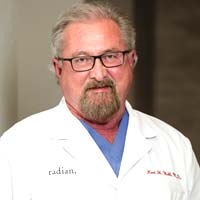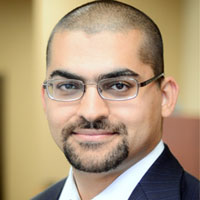ARTAS Robot-Assisted Hair Transplant Debuts in Florida
Hair transplant surgeries have high success rates among middle-aged males suffering from androgenic alopecia. However, hair transplant surgeries often leave long permanent scar on the back of the head, making it difficult for the patients to wear their hair short.
Modern technologies now come to the rescue of these patients. With the help of advanced robotics technologies, known as ARTAS, hair transplant surgeons are able to make tiny circular grafts instead of the ear-to-ear cut. These circular grafts are barely noticeable, so they don't leave long scars on the head.
The ARTAS system uses an FDA-cleared technology that
was developed with several leading hair restoration physicians. This computer-assisted and image-guided hair restoration technique involves transplanting healthy follicles to the patient's scalp most affected by baldness.
The robots-assisted technology is more precise than the conventional "plugs" used in traditional Follicular Unit Extraction (FUE) method. The plugs look clumsy after implant. However, the new robots-assisted grafts transplant can be performed more skillfully. The technology guides the doctor allowing more precision while offering minimum discomfort to patients.
ARTAS hair restoration procedure is the right hair restoration solution because the implanted hairs develop their blood supply, so they grow naturally like other hairs. Results are visible in a few months' time.
However, ARTAS or the robotic system is used only to remove hair grafts, not for their implantation. The surgeon manually places grafts into the scalp under local anesthesia.
Despite these, ARTAS is considered much faster and accurate than the time consuming traditional Follicular Unit Extraction (FUE) technologies. The robot works for about three hours to remove the hair, and the doctor spends about three hours implanting it. However, compared to the strip method or the Follicular Unit Transplant (FUT), ARTAS is more time consuming.
Without doubt ARTAS is more expensive than the traditional methods. The surgery costs about $10 per graft of one to four hairs, compared with about $5 per graft for the strip surgery. On an average, a typical surgery averages 2,000 grafts. Since hair transplant is usually cosmetic, the treatment is not covered by insurance.
ARTAS robotic surgery got approval from Food and Drug Administration last year. The technology is gaining popularity in the country. It is currently performed in a few cities. Dr. Glenn Charles of Boca Raton recently
performed the ARTAS-based hair transplant surgery in Florida, marking the debut of the technology in the State. "We are heading into the future of hair transplant technology," said Charles. "The robot assists the doctor much more accurately and with minimal discomfort."
HairFear
Frequently asked questions about hair transplant procedures
How much does a hair transplant cost?
Hair transplants can vary in price based off of the area in the world that you are interested in getting a hair transplant as well as the size of the area where you may need a hair transplant. Experienced doctors in the United States will often charge some of the highest prices for a hair transplant worldwide and this is why so many travelers make the move to other parts the world like Turkey, India, Thailand, Mexico...etc for their hair transplants.
Will a hair transplant hurt?
Although hair transplants may look like a particularly
unpleasant or painful experience is actually very little discomfort involved
with the surgery itself. Hair transplants are always done under an anesthetic so there's absolutely zero pain during the treatment itself. Many people actually relate the process as being very similar to going to the dentist for filling or root canal. Mild pain can persist over the course of postop treatment but he generally just resumes for a few days.
Who can deliver the best surgery?
It's usually best to consider working with surgeons who have and IAHRS certification or international alliance of hair restoration surgeons recognition. IAHRS can often deliver recommendations for the best surgeons in each particular area.
Is this scarring noticeable?
Any type of hair transplant will require the use of incisions throughout the scalp. There can also sometimes be a small scar from the donor area towards the back of the scalp. Asking to look at photos of the surgeon's previous work will help you to see roughly how bad the scarring could be. In most cases an experienced professional can limit the look of scarring and noticeable marks from the surgery.
How long does it take for the hair to grow?
In most cases hair growth will start within eight months and you can start to see a full effect from the hair transplant after a full year. The initial signs of growth can usually start between 3 to 4 months after the surgery.
Are the results permanent?
The hair follicles that are transplanted are generally the ones which are genetically resistant against the symptoms of baldness. As long as you receive hair loss treatment later in your life after the symptoms of balding have started to subside, you can have a better chance at permanent results.
While everyone know you've had surgery?
If you want to limit the chance that people may find out about your surgery it's important to give at least three weeks of healing as the surgical area will be affected and red just after surgery. After around a month of healing it can look far less noticeable. You could consider wearing a hat while time passes or opting for some extra time off if possible.
How long should I rest after surgery?
It's recommended to rest for at least a few days after surgery so that your body can recover. Trenton to over exert yourself and limit sexual activity, running in the gym for around 10 days after surgery.
Is it possible to lose more hair as a result of surgery?
There is always a chance of shock loss which happens when the hair is weak and miniaturizing after the surgery. As long as the surgeon is choosing the correct hair follicles and performing the surgery well it's possible to minimize the chance of this happening however.
Will I need another hair transplant?
The need for another transplant really depends on the individual. With a solid foundation surgery and working to potentially bolster results with drug therapy, you can improve the stability of the hair that was transplanted as well as prevent further loss. Getting a hair transplant early
on in your 20s or early on in life could lead to needing long-term transplants as hair loss can be progressive.







